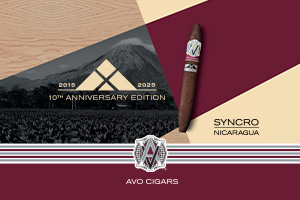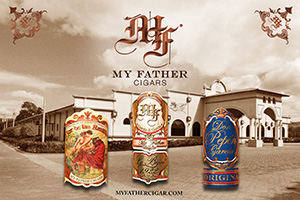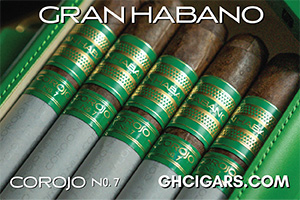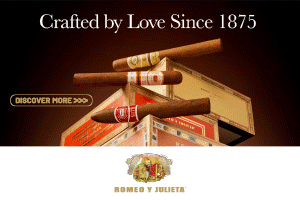Wrapper Tobacco’s Influence on Flavor
There is no debating that the wrapper tobacco on a cigar has an impact on the taste of a cigar, and depending on the factors that we are about to look at, the influence can either be substantial, or minimal.
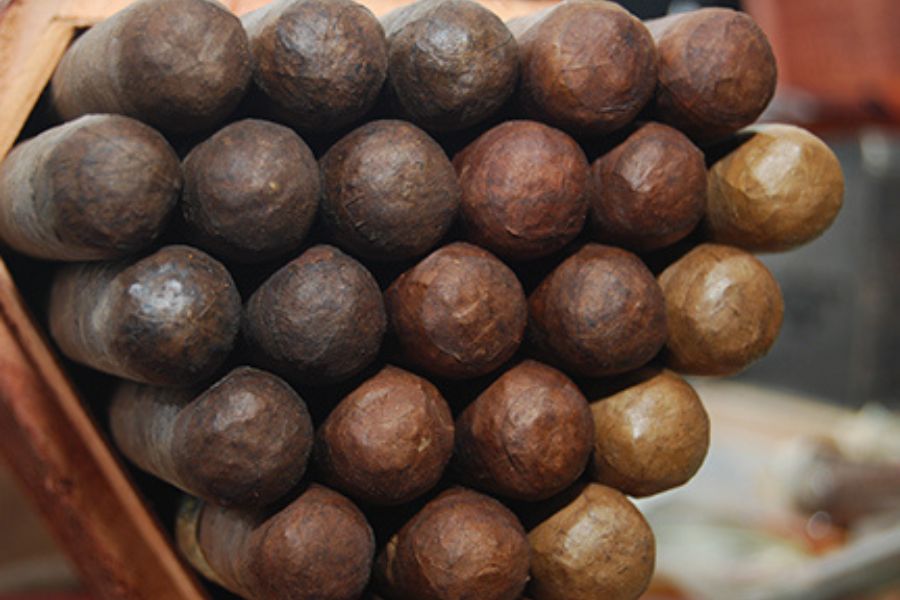
This is never a precise statement. The best way to notice the influence is to smoke two cigars that share the following attributes: They have the same binder and filler. They have the same size and shape. They must have the same humidity conditions. And finally, have two different varieties of wrapper. The difference in flavor will be obvious.
Here are six factors that play a big roll on the influence that cigar wrapper tobacco has on the flavor of a cigar:
1. The cigars filler and binder and how they contrast with the wrapper.
Although we are talking about wrapper influence, we have to evaluate the different flavors and strengths of the fillers and binders. The fillers and the binder have to be the same seed variety and foliage level (priming) in the different cigars we are testing. So given that they have the same filler and binder the difference in taste will be a reflection of the wrapper alone. For example, if you are testing a cigar with a bottom priming of an Ecuadorian Connecticut wrapper (one that is mild and neutral in taste with filler and binder that are ligero, which are high in body strength with lots of flavor), the wrapper will not come out and dominate the taste of the cigar. On the other hand if you use bottom foliage leaves for filler and binder and a powerful ligero Habana type wrapper (say from Nicaragua), you can be sure the majority of taste and flavor will come from the wrapper. From here on out, in order to determine the influence of a wrapper on any cigar, it will have to have the same filler and binder.
2. How the cigars ring gauge affects the flavor of a wrapper leaf.
The majority of premium cigars are a combination of three major components. There is a combination of filler leaves (the blend), a binder (that is usually half of a leaf), and a wrapper (which is always a half leaf). Small ring gauge cigars have more flavor of the wrapper than that of a thick cigar. In a big cigar you have a higher amount of fillers that will compete for the taste as opposed to the smaller ring cigar, which will have much less filler tobacco. The smaller the ring gauge, the more influence the wrapper will have on a cigar.
The shape of the cigar is also important in terms of what you taste from a cigar. If you are smoking a perfecto shaped cigar like a Davidoff Short perfecto, at first you taste mostly the wrapper and not much of the fillers. As the cigar progresses and you get to the thick center of the cigar, you will be smoking more of the fillers, therefor getting the complete stimulation of the whole blend.
To specifically see how the wrapper will affect the taste of a cigar, we now know that the same filler and binder must be used, as well as the same ring gauge and preferably a straight shape cigar like a robusto or corona. Now we can discuss the actual wrapper tobaccos influence on a cigar.
3. The wrapper seed.
There are several genetic varieties of wrappers used in the different cigars we smoke that offer different flavors, different aromas, and different strengths. This of course is a subjective issue and everyone has their own opinions as to what the different attributes for each are. We may be able to agree that the Connecticut wrapper grown in Ecuador is a nice looking wrapper that is mostly mild to medium in strength with a more neutral taste (which is a good thing too, as this lets more of the filler and binder flavors come out). Some people express that the light Connecticut seed wrapper from Ecuador is a bit acidic for their taste, while others say it’s just what they like. The Habana type wrappers from Central America are more likely fuller-bodied and higher in strength. The Connecticut broadleaf wrapper from the states has a unique taste and a peculiar sweetness with more of a medium-body. The Indonesian wrapper has a trademark wooden smell (that comes from the barns while curing) and metallic taste. The Dominican wrapper, with its spices and complexity offers an interesting taste and aroma.
What the wrapper can do to the cigars taste not only comes from the genetic lineage but also from what you do to the wrapper tobacco in the fermentation process, in the aging process, and of course it will depend on the land in which the tobacco is grown in.
4. The land where the wrapper comes from.
Like in the wine business, the same seed planted in a different land gives you a different outcome. The Cabernet Sauvignon or the Merlot grapes planted in France are different than the ones planted in California or Chile. For tobacco, the soil that is richer in minerals (iron, potassium, magnesium), microelements, and organic materials, will produce a more complex and aromatic tobacco. The soil with the right PH (Potential Hydrogen Capacity in Spanish) of 5.0 to 6.5, enables the tobacco plant to assimilate all those nutrients. In this land segment I’ll incorporate the individual agricultural practices that the farmer does and will also factor in the flavor of tobacco. For example, taking the flower off of the plant early gives more strength to the leaves, making them richer and stronger in flavor. Cutting off the bottom leaves makes the plant give all the nutrients to the higher leaves where the ligero is; therefore you get heavier leaves with high nicotine content. The weather will also have some impact on the tobacco. You can plant the same seed year after year in one specific land, and then one year it rains too much. The land is washed up, the fertilizers dissipate, and you get milder tobacco then you may have if the weather were drier.
5. Curing, fermentation, and aging of the wrapper.
The way and the extent in which a company processes their wrapper tobaccos can determine some characteristics of the flavor and strength when it is rolled on a cigar and ready to be smoked. The curing process can also affect the taste. The candela wrapper for example, is obtained by firing up the barn with high temperatures in a closed area of the shed, which fixes the green color of the leaf. In the candela process, the tobacco never gets to cure and therefore never developed the taste in which the tobacco is capable of. For most people this will provide a green or grassy taste.
The fermentation (similar to the maduro article published in Vol III Issue IV of Cigar Press) has a lot to do with the wrapper tobacco losing some of the acidic connotation, nitrogen elements, and the ammonia that is present on the leaves. This makes the leaves much more smoke-able. Some factories don’t like to ferment their tobaccos thoroughly leaving a high amount of nitrogen elements and a high nicotine level. This provides a raw taste that is many times mistakenly confused with the tobacco’s strength. This is actually a popular trend today. On the other hand, if the wrapper tobacco is over fermented it will lose the essential oils that produce the natural aroma, the shine, and most of its strength.
The aging of the wrapper in bales is very important as this settles the aroma, improves the taste as well as the combustion of the leaves. Not aging the wrapper also gives you a taste of raw and immature tobacco that is not considered ideal, but some cigar smokers have proved to like this sensation in todays market.
6. The storing of cigars.
After the cigar is made it’s important to keep it in the right environmental conditions (ideally, 68% humidity and 70 degrees Fahrenheit.) until you decide to smoke it. Some cigars that contain a lot of ligero in their blend will burn better at a slightly lower humidity percentage. There is a small window for personal choice when it comes to humidity, but the most important part is that the temperature and humidity remain constant. If a cigar encounters high humidity when being stored, a white film will develop on the cigar. This is actually a fungus due to the excess humidity. The resulted moldy cigar will now have a different taste, even when wiped clean. Keeping cigars in too low of a humidity level is not good either, as all of the essential oils will eventually dissipate. To keep the cigar alive when stored you need good storing conditions. If it’s too dry the tobacco is at rest and the flavors will not come out. If they stay dry for a long time the cigar will loose part of its flavor. This is especially true in cigars that have been thoroughly fermented and aged. With cigars that use tobaccos not completely fermented or aged, storing in non-ideal conditions is not as tough on the cigar. In fact, it can even be beneficial if the right storing conditions are offered to those cigars.
There are certainly different factors one must consider when trying to evaluate how influential a cigars wrapper tobacco is on flavor. There are certain conditions from the soil to how cigars are stored that will ultimately affect the cigars flavor. When trying to decide for yourself how much flavor comes from the wrapper, take these factors into consideration. As one wrapper can taste differently depending on so many things. One thing is for sure, if you change the wrapper on a cigar blend, there is an undeniable change in flavor. As with everything else that has to do with taste and the palate, it’s subjective when figuring out any sort of specifics.






